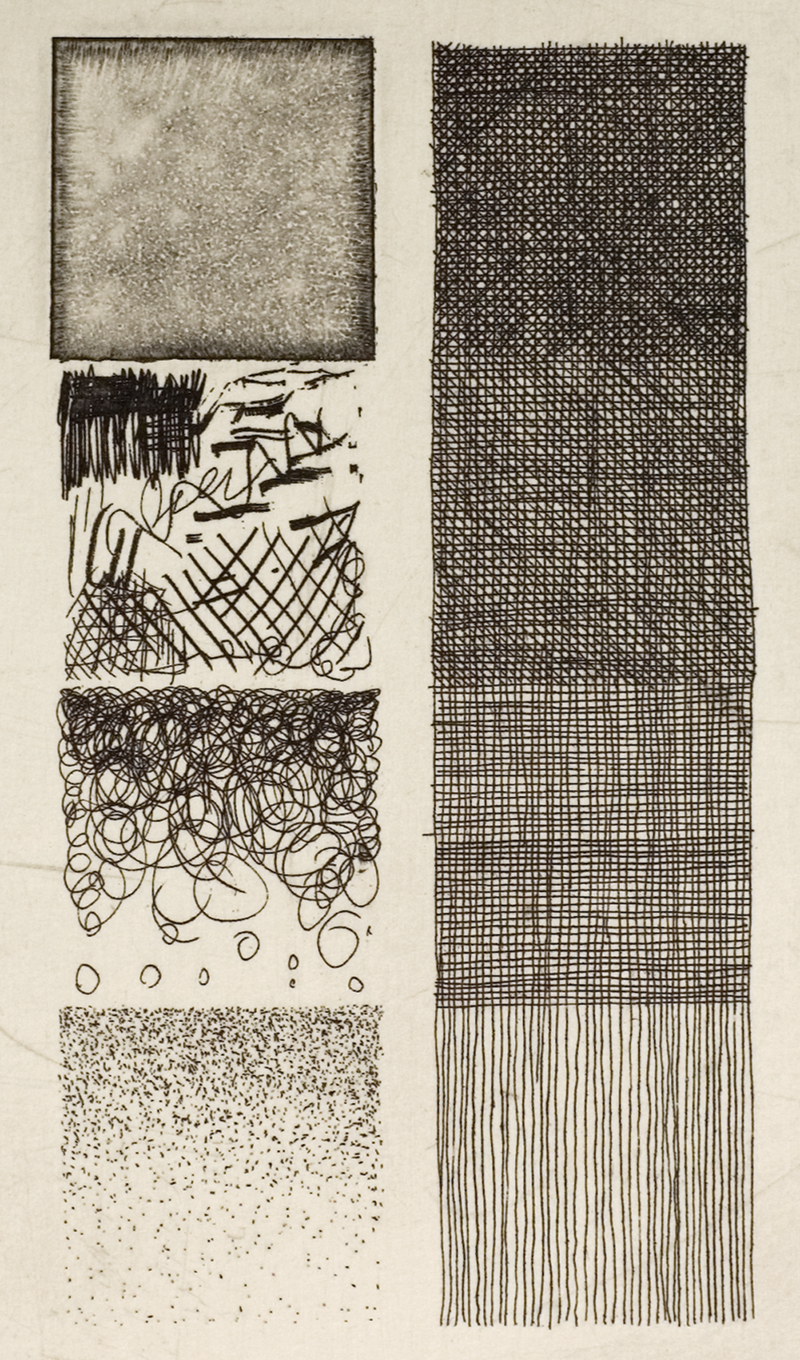Etching
エッチング
Ecching
Etching is an indirect intaglio printmaking technique in which the metal plate is prepared through corrosion. A needle is used to scratch and peel off the anticorrosive coating on the plate to expose the metal surface. When this plate is immersed in mordant, the exposed metal surfaces are corroded forming grooves. These grooves are loaded with ink and the plate is subjected to pressure in a printing press with a piece of paper on top. Ink is transferred to the paper to produce the printed image.
Intaglio printing techniques originated in Europe in the mid-15th century from the techniques of goldsmiths who engraved decorative patterns on armor and precious metal. When this printing method was first developed, direct intaglio (direct carving) techniques such as engraving with a burin were the mainstream. However, in the early 16th century, etching, which also originated from the techniques for decorating armor and precious metal, started to be applied in printing. By the 17th century, copper plate printing which draws on this technique flourished. Etching is still the most well-known basic technique of intaglio printing and is often regarded as being synonymous with copper plate printing.
In etching, an anticorrosive substance called ground is firstly applied on the plate surface. A liquid hard ground works best. Pour a generous amount on the plate and gently tilt the plate to spread the liquid over the entire surface. Allow excess ground to drip back into the container. Once the ground dries, heat the plate lightly from the back. This helps the ground to fix firmly on the plate and improves its durability. The image is drawn using a needle. Use it to scratch the ground off and expose the bare metal underneath. When the image is complete, the plate is then etched with a mordant such as aqueous ferric chloride or aqueous nitric acid. Grooves are thus formed on the exposed sections. The final plate is prepared by repeating this series of tasks while checking the degree of corrosion. The technique of using a needle in this way to draw the image before etching the plate is sometimes referred to as a line etching. There are other variations such as lift ground etching in which poster paint or gum Arabic is used as a masking liquid, and soft ground etching which is carried out by mixing hard ground with grease to produce ground which does not dry completely, pressing an object against this to obtain its impression and copying this onto the plate before etching.

- Example of platemaking using the etching technique

